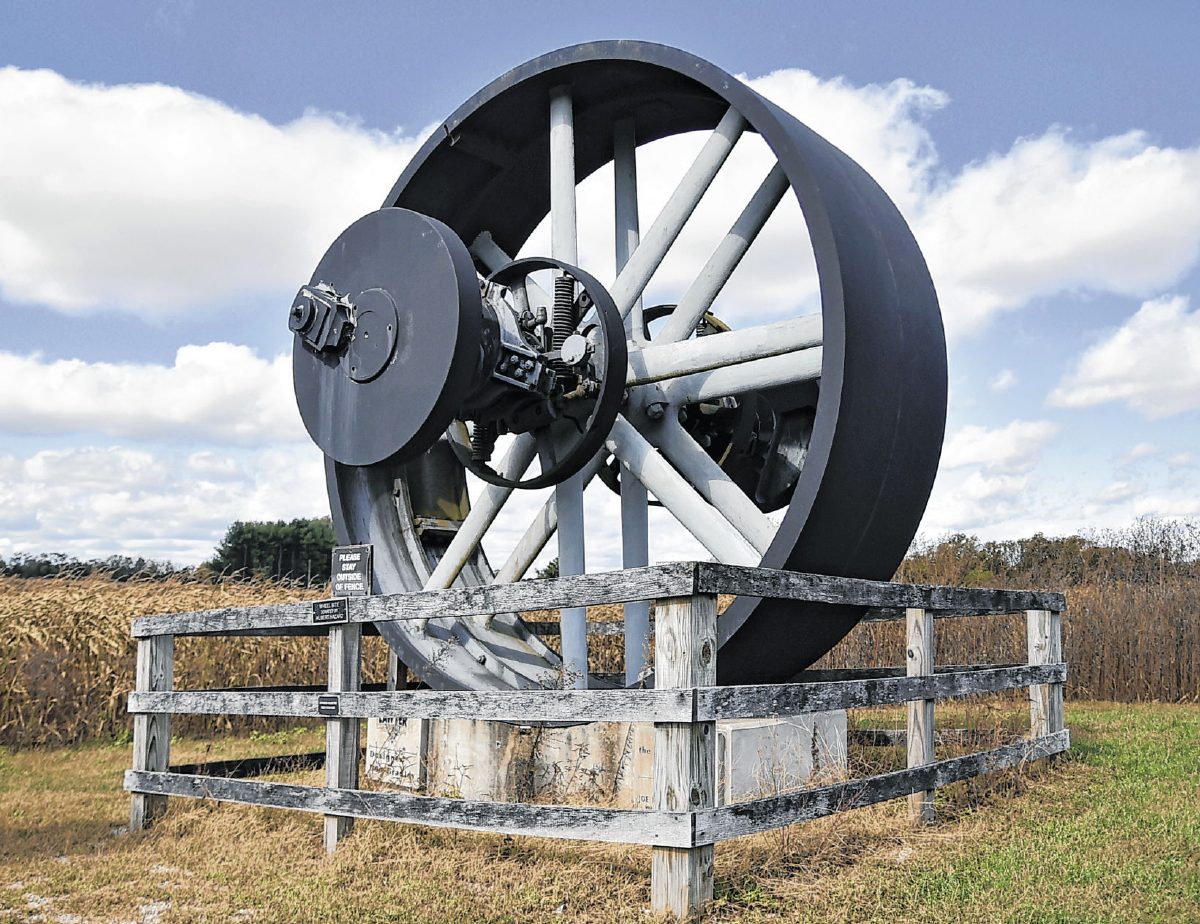
While the fine details still need ironed out, city officials plan to have the Blish Milling Co. flywheel return to downtown Seymour.
The Seymour Parks and Recreation Board approved moving the 16.5-ton wheel to Crossroads Community Park during a meeting Monday evening.
The park sits right across the street from the original silos where the flywheel helped generate electricity for the milling company on Tipton Street or U.S. 50.
Over the years, the flywheel has drifted between different locations.
[sc:text-divider text-divider-title=”Story continues below gallery” ]Click here to purchase photos from this gallery
The Seymour Board of Public Works and Safety loaned the artifact to the Reddington Rear Wheelers antique tractor club in 2009. The club moved the wheel from Freeman Municipal Airport to club member Hubert Hazard’s property at 1100 N. U.S. 31 in Reddington, where it has stood for the past decade.
Hazard died in 2012, and Pam Obermeyer, who inherited the property, requested the city move the wheel in 2018 because of liability concerns.
The Rear Wheelers relinquished its interest in the flywheel in September, saying it didn’t have the money or a place to move the wheel.
The idea to move the flywheel back downtown was presented to the parks board.
During the meeting, none of the board members in attendance opposed the idea.
"It’s part of history. It’s part of Seymour," board member Gary Colglazier said.
Board member Zabrina Nicholson said the flywheel would help bring people downtown.
"With all the murals coming downtown, it makes sense to put it downtown," she said.
The Blish Milling Co. was headed by John Blish, one of the first millers in the nation. He moved to Seymour after he met and married Sarah Shields, daughter of Seymour founder Meedy Shields.
After becoming the new location for Blish’s milling operations, he constructed a mill in 1854 north of the existing silos.
The mill burned downed on Halloween night in 1885, but a new mill was built a year later to the south of its former location.
By 1912, 1,200 barrels of flour were manufactured daily in the four-story building. Peak production was during World War I.
In the 1930s, the business constructed 109-foot silos, expanding the mill’s storage capacity to a half-million bushels of wheat. Some of those original silos still stand today.
Mill workers manufactured bran and flour that was shipped all over the United States and to Europe and South America. Some of the flour was put in 200-pound sacks and some in smaller 25-pound sacks.
The 12-foot flywheel powered the entire five-story flour mill by belts and shafts. Its buckeye compound cross engine developed 500 horsepower at only 126 RPM.
According to information at the wheel’s Reddington site, the belt that ran the big wheel was made of leather and was 1 inch thick and 42 inches wide. The engine used to power the big wheel burned coal and would burn about a ton of coal per hour in full production. The coal was brought to the mill by rail car and was shoveled directly into the engine by hand.
Farmers would bring their grain to the front (east) side of the mill where the scales and office were located, the site says. Grain was dumped onto the ground with a grating cover, and the grain would go to conveyors underground and be transported to where it was needed.
Milling ceased in 1951, but the silos were used until the late 1960s. One of those companies was Acme-Evans Co. of Indianapolis.
The city of Seymour bought the Blish Mill in the early 1970s when U.S. 50 needed to widen, and the mill was razed.
In 1974, demolition started, which included the removal of a 100-foot smokestack, parts of the building and metal grain bins, according to Tribune records.
However, the silos were deemed too expensive to demolish.
The Gill family has owned the silos for the past 19 years.
Bob Tabeling, director of the parks and recreation department, suggested the flywheel go on the hill near the railroad tracks on the west side of Crossroads Community Park. He said his department will look into the costs of moving the wheel and creating a base to support it.
Earlier this month, Mayor Craig Luedeman estimated it will take $2,000 to $5,000 to move the wheel.
Tabeling also said the board will have to look into ways to ensure people don’t climb on the wheel or vandalize it.
Members of the board also discussed the possibility of creating an informational sign to go along with the wheel.
